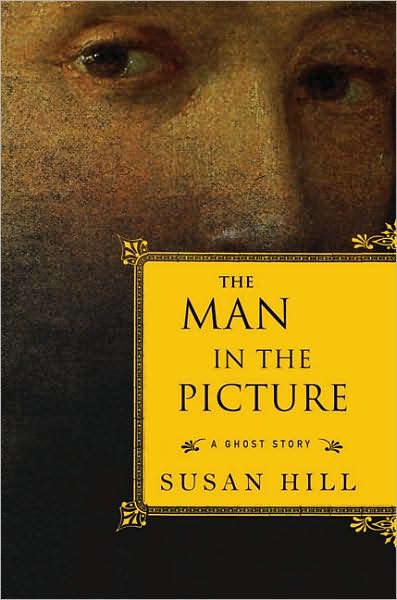The Man in the Picture
by Susan Hill
Woodstock, N.Y.: The Overlook Press
2007
145 pages
Another book I read this summer was The Man in the Picture by Susan Hill. I had read Susan Hill's most famous book, The Woman in Black, and really enjoyed it as a deliciously satisfying ghost story. I was attracted to check out The Man in the Picture story because of the painting aspect. My son is an art major and we visit a lot of art museums. The concept of haunted paintings is also one I have seen before in other books. The Picture of Dorian Gray by Oscar Wilde is a story about a decadent man who stays young but his picture deteriorates into a horrifying monster. Stephen King includes haunted paintings in two of his stories: "The Road Virus Heads North" in the Everything's Eventual collection in which the writer buys a painting of a car, but the background keeps changing; and Rose Madder, the story of a woman who finds a painting at a pawn shop that changes her life. And a painting in The Witches by Roald Dahl eats a little girl named Erica.
The painting in this book eats people, too.
Told as a frame, or box, story, our first narrator is a man, Oliver, who is visiting his old tutor at Cambridge, Theo Parmitter. It is a cold, winter evening, and the two have just enjoyed a good dinner, when Theo asks his friend if he would like to hear a strange, disturbing, yet true tale. Being comfortable and enjoying his friend's company, Oliver is eager to hear whatever Theo has to tell him. Oliver is directed to examine a painting, hanging in a dark corner. It depicts a night scene during Venice's carnival near the Grand Canal, crowded with entertainers and masked revellers in brightly colored costumes. It is a dark oil painting, rather "artificial" in subject matter, in Oliver's opinion, yet accomplished by an expert hand.
 |
| Francois Flameng (1856-1923): The Carnival, Venice |
I'm not going to give away any more of the plot. We learn more about the paintings history. Strange things happen to Theo and Oliver, and eventually there is a frightening ending, all of which are satisfying to the ghost story fan.
This story reminded me of older ghost stories I have read, such as those of Le Fanu, Nesbit, and Henry James. The writing style is satisfyingly descriptive and balanced nicely with the dialogue. Tension is built slowly and with skill. Spooky things happen but they are planned carefully by the author rather than coming too frequently, which I think tends to desensitize us too much to the frightening elements. The frame story works well here, too; we get the background from Theo Parmitter who needs to find relief in telling his story, and the entirety of the horror of the painting stuns us with Oliver's further experiences.
I have found two paintings of the Venetian Carnival that remind me of this story. The top painting, by Francois Flameng, a Frenchman painting in the late 19th and early 20th Centuries, depicts a similar scene to that of the mysterious painting of this book. It is an outdoor scene, on the quayside, with revellers, musicians, and gondoliers dancing and cavorting. This scene differs, however, in that it is a pleasant day, with fluffy clouds and blue sky visible above, rather than night. I get a feeling of joy and festivity and fun from this painting.
This story reminded me of older ghost stories I have read, such as those of Le Fanu, Nesbit, and Henry James. The writing style is satisfyingly descriptive and balanced nicely with the dialogue. Tension is built slowly and with skill. Spooky things happen but they are planned carefully by the author rather than coming too frequently, which I think tends to desensitize us too much to the frightening elements. The frame story works well here, too; we get the background from Theo Parmitter who needs to find relief in telling his story, and the entirety of the horror of the painting stuns us with Oliver's further experiences.
 |
| Pietro Longhi, The Ridotto in Venice, c1750s |
The second painting, by Venetian painter Pietro Longhi, suits the mood of the book much better. Longhi included masked figures in many of his paintings, and this painting has a darkness, mystery, and secrecy that is lacking in the Flameng painting, I think. The characters in this scene, rather than enjoying light-hearted and good-natured fun, seem to be relishing the anonymity the masks give them, freeing them to commit acts they would not dare to do without the masks.
The Man in the Picture is a quick read. The best time to hear this "strange, disturbing, yet true" tale is on a dark evening in front of the fire. You just might want to turn the paintings in the room to the wall first!
The Man in the Picture is a quick read. The best time to hear this "strange, disturbing, yet true" tale is on a dark evening in front of the fire. You just might want to turn the paintings in the room to the wall first!

No comments:
Post a Comment
Note: Only a member of this blog may post a comment.